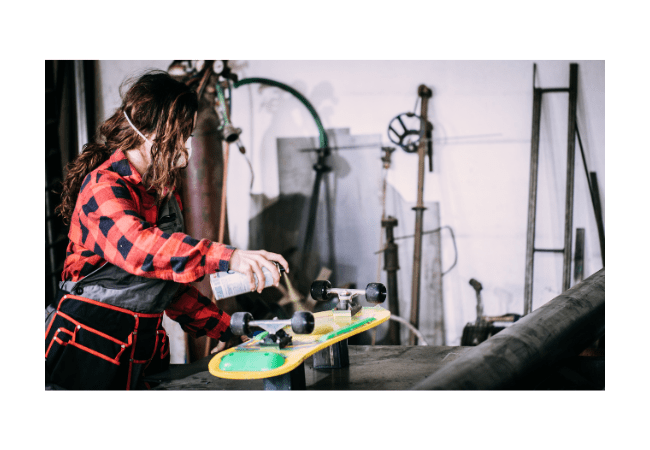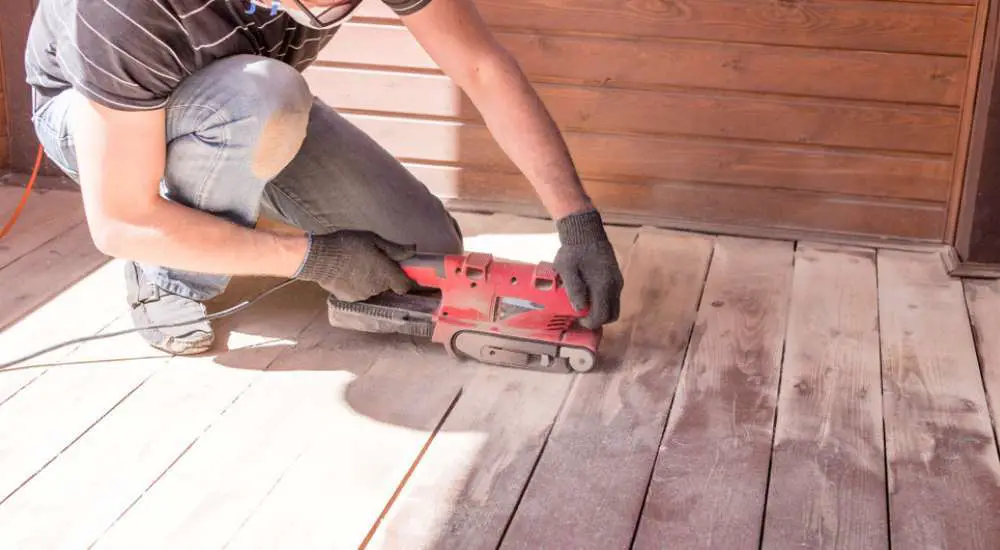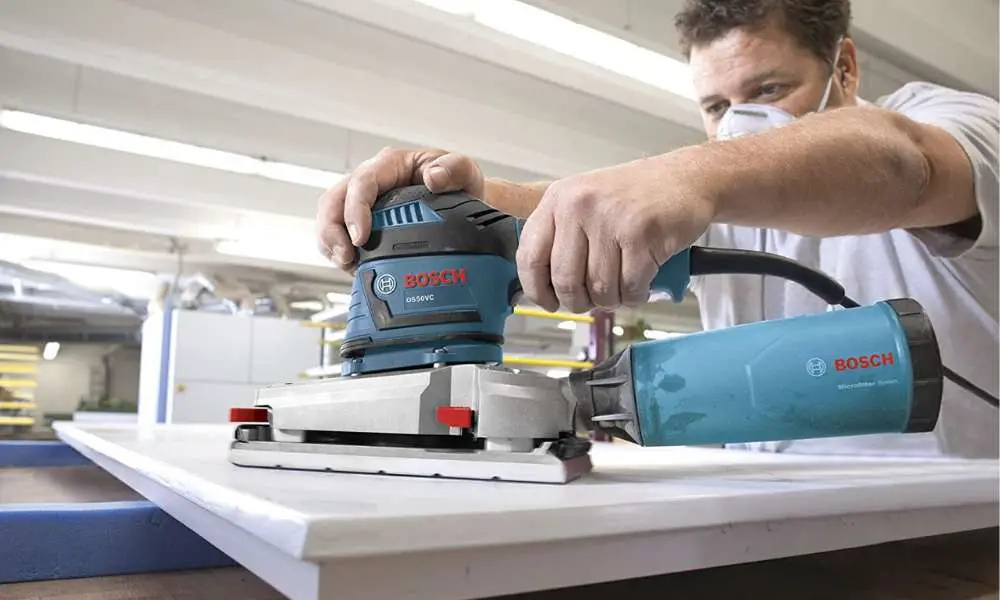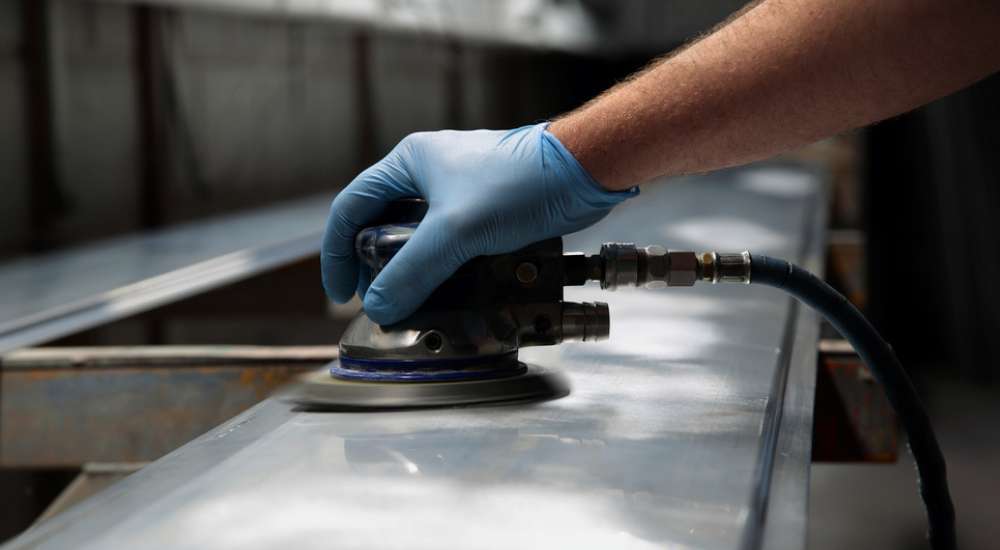It is never a certainty that spray paint will perform in the way that it is intended, and this is due to multiple factors. As a matter of fact, there is actually an art to getting spray paint to come out smooth, so here we will teach you how to get a smooth finish with spray paint.
Buying spray paint in a can is meant to be a convenience rather than a performance factor. You have the paint in the color you need ready to be applied, and it also spares you the trouble of setting up a paint sprayer. The trade-off to spray painting is that the finish quality may not be as good in comparison.
The construction of the spray can may not give you the most favorable results, or something inside the can, such as a clog or misshapen plastic part can hinder the spray painting can’s performance, causing the finish not to be as good or as effective. But fortunately, there are ways that you can overcome any and all the shortcomings of the cans of spray paint that you buy so that their finish looks just as professional as a top-of-the-line paint sprayer.

Contents
- 1 What You Will Need to Follow This Tutorial
- 2 Surface Preparation
- 3 Choosing the Right Spray Paint
- 4 Step-by-Step Instructions – How to Get A Smooth Finish with Spray Paint
- 4.0.1 Step 1. Choose which day to begin your spray painting projects
- 4.0.2 Step 2. Gather your supplies
- 4.0.3 Step 3. Prepare to spray paint
- 4.0.4 Step 4 (Optional). Apply your primer
- 4.0.5 Step 5. Paint your application with your first coat
- 4.0.6 Step 6. Clean the nozzle of your spray can
- 4.0.7 Step 7. Paint with a second coat
- 4.0.8 Step 8. Apply coats on areas still unpainted
- 5 Post-Painting Techniques
- 6 FAQ’s
- 6.1 What is the best way to achieve a smooth finish with spray paint?
- 6.2 How can I avoid streaks and runs when using spray paint?
- 6.3 Can I use a primer to achieve a smoother finish with spray paint?
- 6.4 How long should I wait between coats of spray paint for a smooth finish?
- 6.5 Can I use sandpaper to achieve a smooth finish after spray painting?
- 6.6 Can I use a spray paint gun to achieve a smoother finish?
- 6.7 How do the temperature and humidity affect the smoothness of my spray paint finish?
- 6.8 How can I minimize the risk of overspray when trying to achieve a smooth finish with spray paint?
- 6.9 Conclusion
What You Will Need to Follow This Tutorial
While painting with spray paint is made to be easier and more convenient, there is some prep work that we recommend you do to ensure the finest results from your paint. You are required to have the following items on hand as you prepare your spray paint.
The cans of spray paint that you want to use.
Sheets of sandpaper.
Your primer of choice.
A pair of gloves.
A mask or respirator.
Sheets of tarp or old newspaper.
Cloth for cleaning.
One or two paint brushes.
If the room or application that you are spray painting is rather large, you should also consider getting a painter’s smock or changing into old clothes that you do not care to get paint on. If you have long hair, we also recommend tying it back so that you have a lesser chance of getting covered in paint. If you intend to paint something that is already painted, you will first need to remove the paint completely from it. To remove paint, we recommend denatured alcohol or nail polish remover. Additionally, if you have a spray booth available to use, you can use it as your setting to paint an object and avoid having to paint outdoors with the interference of any possible weather or environmental hazards.
Surface Preparation
Cleaning and Degreasing the Surface Before starting any spray painting project – it’s essential to ensure that the surface is clean and free of contaminants, such as dirt, grease, and oil. Using a mild detergent and warm water, thoroughly clean the surface to remove any debris that could affect paint adhesion and lead to an uneven finish. After cleaning, rinse the surface with clean water and allow it to dry completely. For particularly stubborn grease or oil stains, consider using a dedicated degreaser for optimal results.
Sanding and Smoothing the Surface – once the surface is clean and dry, the next step is to sand and smooth it. Using medium-grit sandpaper (120-180 grit), lightly sand the surface to remove any old paint, rust, or imperfections that could affect the final finish. This step is crucial for creating an even, smooth surface for the spray paint to adhere to. After sanding, wipe down the surface with a tack cloth or a damp rag to remove any dust or residue, and allow it to dry completely before proceeding to the next step.
Using a Primer for Improved Adhesion and Even Coverage – applying a primer before spray painting is an excellent way to enhance the overall smoothness of your finish. A primer creates a uniform, adhesive surface for the spray paint to bond with, reducing the risk of streaks, runs, and uneven coverage. Additionally, primers can help to fill in small imperfections on the surface, ensuring a more consistent and smooth final result. Choose a primer that is compatible with your spray paint and follow the manufacturer’s instructions for proper application and drying times.
Choosing the Right Spray Paint
High-Quality Spray Paint vs. Cheap Alternatives – investing in high-quality spray paint is crucial for achieving a smooth, professional-looking finish. High-quality paints generally have better pigments, binders, and additives, which contribute to a more even application, better coverage, and a longer-lasting finish. While cheaper alternatives may seem more budget-friendly, they often result in a less consistent finish and may require additional coats, negating any cost savings.
Selecting the Appropriate Nozzle Size – the nozzle size on your spray paint can significantly impact the final finish. A fine mist nozzle is ideal for achieving a smooth, even coat with minimal runs or sags. Some spray paint cans have adjustable nozzles, allowing you to change the spray pattern according to your needs. When choosing a nozzle size, consider the size and complexity of your project and opt for one that provides the most control and precision.
Understanding Spray Paint Drying Times – different spray paints have varying drying times, which can impact the smoothness of your finish. It’s crucial to follow the manufacturer’s instructions regarding drying times between coats and overall curing times. Applying additional coats before the previous one has dried can lead to runs, sags, and an uneven finish. Moreover, allowing the paint to fully cure before handling or exposing it to the elements will ensure a more durable, long-lasting finish.
Step-by-Step Instructions – How to Get A Smooth Finish with Spray Paint
Spraying paint should not be a quick job that you can do in half an hour. Instead, it should be a long process that involves some planning ahead of time. Here are some of our best spray painting tips.
Step 1. Choose which day to begin your spray painting projects
If you have a spray booth that you can use, this might seem like a less important step, but to those that do not, picking a day or weekend ahead of time to paint your application is important to ensure the best results possible. Turn to a weather forecast to look for suitable painting days. The ideal weather for painting is calm, cloudless, windless, and with no precipitation expected. Days with excessive sun and hot air are also days you should avoid, as the heat can cause the paint to dry faster than you’d like. Look for any series of days in your forecast with no rain and next to no wind with temperatures that are 75 degrees Fahrenheit or lower.
Step 2. Gather your supplies
In the days leading up to your spray painting project, determine how much spray paint, plus gather all of the supplies that you need to spray paint your application. Refer to the list of supplies that you need to get and keep them all in one place leading up to the day that you have decided to commence your spray paint. On the day when you start your spray painting project, set up your tarp or newspaper so that no paint or other chemicals get on your floor, grass, driveway, etc. Be sure that the area where you are spray painting isn’t blowing in the way of cars or pedestrians.
Step 3. Prepare to spray paint
Your application needs to be clean, smooth, and free of any old paint to ensure a successful transition in color and a smooth finish. If your application already has a coat of paint on it, sand it off with sandpaper or apply denatured alcohol or nail polish remover to remove this paint. If you have scratches in your application, very fine sandpaper can also smooth these scratches out. It is important to buff and smooth out any noticeable scratches, or else these scratches can stand out more once you apply your paint over them. And of course, be sure to clean your application of any debris and old paint. If you paint over any debris, it can mold onto your application, making the finish rough, or it will peel off, leaving an unpainted area on the surface. With water, wash any and all debris from your application and dry it quickly with a dry, white cloth.
Step 4 (Optional). Apply your primer
If your primer comes in a spray can, spray it onto your application as normal. If you need to paint your primer on yourself, apply primer to your surface with your paintbrush of choice. Paint it as you would apply to paint the traditional way and ensure all areas are covered with nice, even coats. Once you have applied your primer successfully, wait for at least 24 hours to apply a coat of paint to your application.
Step 5. Paint your application with your first coat
When your application is clean, smooth, and ready for paint, you can start to spray. But before you paint your surface, test the paint on a newspaper or scrap material. With new spray paint, there is always that tuft of hardened paint that comes out first before the wet, soft paint. This spray paint should come out in a mist that travels in a cone-like pattern. Shake the can of spray paint well before removing the cap. With the nozzle about 12 inches away from the surface of your application, spray from one corner to the other on a horizontal path. Work your way on the area adjacent to the one that you last sprayed, going from one side to the next until the area is covered. Shake the can in between each area that you spray to ensure that the paint always comes out evenly, as well as always coming out in the right color.
Step 6. Clean the nozzle of your spray can
One flaw of spray paint is that the nozzles can easily get clogged the longer you use them. Before starting a new coat, clean the spray nozzle with water and a clean cloth. If paint hardens inside the nozzle, paint can sputter out and create a rough, unappealing finish. After cleaning the nozzle out thoroughly, test the spray pattern on the newspaper. It should come out with a smooth even finish.
Step 7. Paint with a second coat
Spray paint is known for drying quickly, but you will still need to wait a while before applying another coat of paint. Wait for no less than 20 minutes for your first coat to dry so that your paint doesn’t have a chance of developing any cracks or wrinkles. Such is the case with Step 5. Shake your spray can before each area that you are spray painting to ensure even colors and finish. Carefully spray from one side to the next.
Step 8. Apply coats on areas still unpainted
Often the case with objects, you will always have one or more of the sides facing the ground or floor. Once your coats of paint dry entirely, pick your object up and place it on the ground with the unpainted side up. Repeat steps five through seven for this side of your application so that it looks just as your other sides did when you painted them. This might take longer than just spray painting all the sides at once, but it will ensure that all sides will not get smeared when you turn the object over to paint.
Post-Painting Techniques
Gentle Sanding with Fine-Grit Sandpaper – after you’ve allowed the final coat of spray paint to dry completely, it’s time to focus on refining your finish. Using fine-grit sandpaper (600-800 grit), lightly sand the surface to remove any minor imperfections, unevenness, or orange peel texture. Sanding will not only help to create a smoother finish but also improve the overall appearance of your project. Be sure to use a gentle touch and avoid applying too much pressure to prevent accidentally removing the spray-painted layers.
Cleaning and Removing Dust after Sanding – once you’ve finished sanding, it’s crucial to remove any dust or debris from the surface before proceeding with the next step. You can use a tack cloth or a damp rag to wipe the surface clean, ensuring there is no residue left behind. This will prevent any contaminants from being trapped in the clear coat and will promote a smoother, more polished final result. Make sure the surface is completely dry before moving on to applying the clear coat.
Applying a Clear Coat for Added Protection and Polish – a clear coat is an excellent way to provide added protection to your spray-painted surface while enhancing its appearance. By applying a clear coat, you’ll be sealing the paint and providing a layer of defense against scratches, fading, and general wear and tear.
To apply the clear coat, follow the same techniques you used for spray painting: shake the can well, maintain a consistent distance from the surface, and apply light, even coats using a side-to-side sweeping motion. Allow ample drying time between coats, and be sure to follow the manufacturer’s instructions for the best results. Once your clear coat has fully cured, you’ll be left with a durable, smooth, and professional-looking finish.
FAQ’s
What is the best way to achieve a smooth finish with spray paint?
Answer: To achieve a smooth finish with spray paint, follow these spray paint tips: 1) properly clean and prepare the surface, 2) use high-quality spray paint with a fine mist nozzle, 3) apply multiple light coats with ample drying time in between, 4) maintain a consistent distance and angle while spraying, and 5) finish with a light sanding using a fine-grit sandpaper, followed by a clear coat for added protection and durability.
How can I avoid streaks and runs when using spray paint?
Answer: To avoid streaks and runs while spray painting, shake the can thoroughly before use, maintain a consistent distance (usually 8-12 inches) from the surface, and use a side-to-side sweeping motion while applying light, even coats. Allow each coat to dry completely before applying the next one, and avoid applying too much paint in one area.
Can I use a primer to achieve a smoother finish with spray paint?
Answer: Yes, using a primer before spray painting can help achieve a smoother finish. A primer creates a uniform, adhesive surface for the spray paint to adhere to, which can reduce the risk of streaks, runs, and uneven coverage. It also helps to fill in small imperfections on the surface, ensuring a more consistent and smooth final result.
How long should I wait between coats of spray paint for a smooth finish?
Answer: The recommended drying time between coats of spray paint varies depending on the specific product and environmental conditions. Generally, it is best to wait at least 30 minutes to an hour between coats. Make sure to check the instructions on the spray paint can for the manufacturer’s recommended drying time, and always ensure the previous coat is completely dry before applying the next one.
Can I use sandpaper to achieve a smooth finish after spray painting?
Answer: Yes, you can use fine-grit sandpaper (such as 600-800 grit) to lightly sand the surface after the final coat of spray paint has dried completely. This will help remove any minor imperfections and create a smoother finish. After sanding, wipe the surface clean with a tack cloth or damp rag to remove any dust or debris, and then apply a clear coat for added protection and a polished appearance.
Can I use a spray paint gun to achieve a smoother finish?
Answer: Yes, using a spray paint gun can help you achieve a smoother finish compared to using a traditional spray paint can. Paint sprayers offer greater control over the paint flow, pressure, and spray pattern, allowing for a more even application. To achieve the best results, make sure to choose the right nozzle size, properly thin your paint, and practice your technique on a scrap piece of material before working on your final project.
How do the temperature and humidity affect the smoothness of my spray paint finish?
Answer: Temperature and humidity can significantly impact the drying time, consistency, and overall smoothness of your spray paint finish. Ideal conditions for spray painting are temperatures between 65°F and 85°F with a relative humidity of 40-50%. High humidity can cause the paint to take longer to dry and may result in a cloudy or uneven finish. Extremely high or low temperatures can also cause the paint to dry too quickly or too slowly, leading to runs, sags, or poor adhesion.
How can I minimize the risk of overspray when trying to achieve a smooth finish with spray paint?
Answer: To minimize the risk of overspray while aiming for a smooth finish, follow these tips: 1) use masking tape and drop cloths to protect surrounding areas from accidental paint application, 2) choose a spray paint with a precise nozzle for better control, 3) maintain a consistent distance from the surface, and 4) apply paint in a controlled, steady manner with overlapping strokes. Additionally, working in an enclosed or sheltered area with proper ventilation can help to reduce the effects of wind and drafts, further minimizing overspray.
Conclusion
After two successful coats of paint, you should get a super-smooth finish that looks like your application was painted in a factory. The application should look highly appealing, should sport the color that’s on your spray can, and should last a number of years before it starts cracking. These spray paint tips are important in order for you to get the utmost satisfaction from your spray paint.
Thank you for reading about how to get a smooth finish while spray painting. Did you like this tutorial? Please share this article if you enjoyed it. Have a question that we didn’t answer in this article? Please leave your questions and comments in the section below.




Leave a Reply